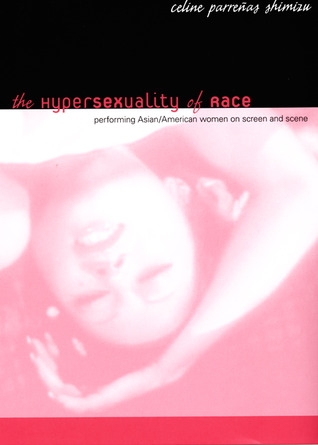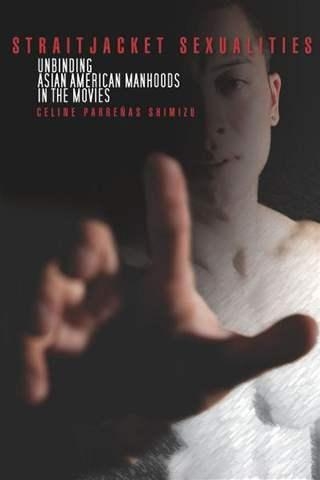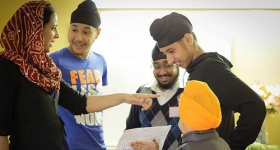Photo: Rhonda Johnson
Celine Parreñas-Shimizu begins her latest book, Straitjacket Sexualities: Unbinding Asian American Manhoods in the Movies, with a close reading of the controversial “Gay or Asian?” photographic spread from the April 2004 issue of Details.
For those who need a refresher, the spread featured an Asian American
male model accompanied with captions that conflated stereotypes of Asian
American and gay men, such as this gem: “One cruises for chicken; the
other takes it General Tso-style. Whether you’re into shrimp balls or
shaved balls, entering the dragon requires imperial tastes.”
As
you can imagine, this recycling of well-worn racist and homophobic
images sold as “satire” did not sit well with a lot of folks, especially
Asian American men, for whom this “straitjacketed” representation of
Asian American male sexuality was a reminder of the many ways in which
Asian American men have historically “fallen short.” But this crisis of
masculinity, Parreñas-Shimizu warns, “must not lead to solutions that
actually deepen and reemphasize Asian American masculinity as lacking
such that the presumed and unstated racial problem is really the queer
and the feminine.” Instead of beating up other men or conquering women
to lick racial wounds, Parreñas-Shimizu wants us to consider “ethical”
manhoods in which Asian American male sexuality is re-defined as the
care for self and care for others.
Where can we find these
alternative masculinities? In the same site of representational injury:
the cinema. Parreñas-Shimizu, a professor of Asian American Studies at
UC Santa Barbara, takes her readers on a critical tour of Asian American
films, characters, and actors past and present such as James Shigeta,
Bruce Lee, and the Hmong American actor Bee Vang from Clint Eastwood’s Gran Torino. In fact, a fan of her work, I hope to work with her next year, on a
fellowship at UCSB. I sat down with Professor Parreñas-Shimizu last March during the 2012 San Francisco International Asian American Film Festival, where she served as a respondent for a panel on Asian American media, to talk about her new book, the joys and challenges of being both an academic and a filmmaker, and of course, Jeremy Lin.
“I
work as both a film scholar and a filmmaker,” says Parreñas-Shimizu,
who has
made over five experimental and documentary films. “In my first film, The Fact of Asian Women, I shared with the actors the work of the women who came before them, like Anna May Wong, Nancy Kwan, and Lucy Liu,” who also comprise some of the subjects of Parreñas-Shimizu’s previous book, The Hypersexuality of Race: Performing Asian/American Women on Screen and Scene. “I historicized them -- where did they come from, why were they popular when they were popular -- and we would talk about their craft. So the film became a space for teaching. But the challenge is how to make it visually innovative.”
Another
challenge for Parreñas-Shimizu is how to make an innovative Asian
American film in the face of the dominant discourse of “claiming
America” and its problematic (yet understandable) desires for voice,
visibility, and authenticity -- “positive” representations. To that end,
she is currently developing her first feature narrative film based on a
true story about a Filipin@ American community in Martinez, California.
“In 1931, there was a Filipina woman who was accused of infidelity and
stealing money from her husband. She was then kidnapped, gagged, beat
up, and buried alive,” says Parreñas-Shimizu. “You have to frame your
subject in a certain way -- claiming a voice, moving out of
invisibility, telling the story of your people. But what if the story
involves one like mine? Where there’s criminal behavior on the part of
the very people you’re supposed to represent positively?”
This
expectation for Asian American artists to represent one’s community
“positively” at the expense of an expansive and complicated portrayal --
the “burden of representation” -- is something that Parreñas-Shimizu
feels strongly about. “The demand to make films that represent your
community does an injustice to the actual work the filmmakers are trying
to do,” Parreñas-Shimizu says. “You can’t film an idea. You have to
film very concrete things, a very concrete person who’s going through
some kind of dilemma. This person may not be a positive person. I’m
thinking of the work of Quentin Lee’s Ethan Mao,
which features a character who’s bullied and silenced by his own father
for his sexuality, and then wields a gun against his own family. I
think it’s a story worth telling. But once you make the demands of, ‘Is
this the kind of visibility we want?’ it can be unfair to the goals of
the filmmaker, which is to tell stories that help make spaces for these
people.”
At the same time, Parreñas-Shimizu understands and feels
the importance of Asian Americans wanting to see themselves in a way
that hasn’t been seen before. This is why she was instantly mesmerized
by the breakout of NBA player Jeremy Lin, whose sudden emergence was coined "Linsanity." “It’s
interesting to watch all the cameras look for Asians in the audience,
but Asians have always been there,” insists Parreñas-Shimizu, a
long-time fan of sports teams from her hometown of Boston.
“Participation in sports is itself an assertion of citizenship and
belonging. For me, being a Filipina immigrant in Boston and just loving
the Celtics and basketball, I remember loving that school was canceled
because the Celtics won the NBA championship and you’re part of that
group in the subway going to the celebration...But yeah,
you see that hunger. I know that hunger. It’s painful.”
But the
medicine that so many Asian American men use to heal that pain -- what
Parreñas-Shimizu calls a “phallic masculinity,” or what other scholars
call a “hegemonic masculinity” -- only hurts others in the process. “I
think it’s very easy to define masculinity in terms of the hero who
saves the day and beats everyone up and sleeps with a ton of women. So
if you define masculinity in that way, the Asian American man has to
fall short. You’re still proposing a straitjacketed definition of what
is gender and sexuality for Asian American men,” says Parreñas-Shimizu.
“I want to open up a world where someone like William Hung can be sexy!
And the thing is, people did find him sexy! He got marriage proposals!
So if we look at masculinity, and what people want from it, it reveals
that there’s something very limited in that kind of phallic
masculinity. It’s not really good for people.”
That
tension between the desire for national recognition and the danger in
subscribing to a phallic masculinity (which undergirds the nation) is
what drove Parreñas-Shimizu to unearth the vast filmic repertoire of
Asian American masculinities. “After I toured for two years for my first
book, people kept asking, ‘Now that you’ve proven the hypersexuality of
Asian American women, what do you have to say about the asexuality of
Asian American men?’ I thought, “We have to historicize it and see if
that’s really what’s going on. Because if it’s true that Asian American
men have only been seen as asexual and effeminate, then how do you make
sense of Sessue Hayakawa or James Shigeta?
These huge heartthrobs from almost 100 years ago, fifty years ago? So
many women fainted at the sight of their sexiness and beauty. So we have
to be very careful about creating that blanket statement.”
What
Parreñas-Shimizu discovered in the course of her research on Asian
American male film stars was something unexpected -- an ethical manhood
that cares for self and for others. Bruce Lee,
one of the most iconic figures in cinematic history, embodied this kind
of manhood. “Bruce Lee cared for the people around him. He had this
amazing expression of vulnerability that women and others found
electric. He also had a relationship with violence that was regretful.
Violence was only inflicted when it was justified. And he had to be
punished for it.” Lee’s sexuality, which Parreñas-Shimizu describes as
“magnificent,” was claimed by multiple people in different ways. “After
his death his wife, Linda Lee Cadwell, published a book entitled Bruce Lee: The Man Only I Knew,” she says. “It was a claiming of him as a good father and a good husband. At the same time, a movie came out called I Love You Bruce Lee
which was about the sexual prowess he had in the bedroom with his purported mistress. So there were these competing ideas of masculinity and
sexuality that are both not quite right because they’re rather binary --
one is a sex bomb guy and one is a good husband. But I think Bruce Lee
in his movies as well as in his interviews presented a much more complex
masculinity that’s somewhere in between those two.”
Parreñas-Shimizu
says there are many contemporary examples of Asian American manhoods
that don’t veer to either heteronormative pole of "master of the pillow" or master of the family. “Keo Woolford is an actor in one of my earlier films who starred in a production of The King and I for a long time, and has a show at the East/West Players Theater called Three Year Swim Club
that he directed and choreographed. It’s about an Asian American coach
who trained these Hawaiian kids to compete in the Olympics. He does a
lot of work on the Pacific Islander body that’s interesting.” Then there
are our favorite stoners, Harold and Kumar. “You can say they’re a part
of this new trend of bromance, nontraditional men who are the new
romantic heroes, but they themselves have an interesting love affair
with each other. Friendship is really celebrated where they can say they
love each other.” And then there’s pornography, where if Asian American
men appear at all, it’s usually as orientalized “bottoms” in the “rice
queen” genre, or gay white men paired with gay Asian men. But there is an Asian British male pornstar who’s rewriting the script. “I’m writing
about Keni Styles, who is the first celebrated Asian heterosexual pornstar recognized by the big awards. In his own video series called Superman Stamina,
he gives his racial history as an adopted Thai man and the bullying he
received as an orphan in London. He developed premature ejaculation
because he never thought Asians could be stallions in bed. And so now he
sells these videos on how to overcome that." Her essay on Styles will be included in a feminist porn book published by The Feminist Press that she's also co-editing, and is due out in February 2013.
I
often ask my interviewees what their favorite song is to sing in
karaoke. Parreñas-Shimizu, however, might be the first Filipin@ person
I’ve ever met who has never sung a karaoke song. “My weakness in life is
lyrics,” she says. “If I hear music, I can’t tell you what the words
are. Isn’t that bizarre? I can’t do it. It’s
almost like I’m tongue-less. We had
a family reunion in Vegas where there was karaoke.
They sang Madonna songs, but I didn’t do it.” If Professor
Parreñas-Shimizu ever writes a book about William Hung, I’d
like to suggest a title that borrows from one of The Material Girl’s
most famous songs -- Touched For the Very First Time: William Hung and Asian American Ethical Manhood.
* * *
Disclosure: The editor of Hyphen's Across the Desk series is a colleague of Celine Parreñas-Shimizu at UC Santa Barbara's department of Asian American studies. However, views expressed in this article are the author's own. This post has been modified since its original publication, for length and factual accuracy.












Comments